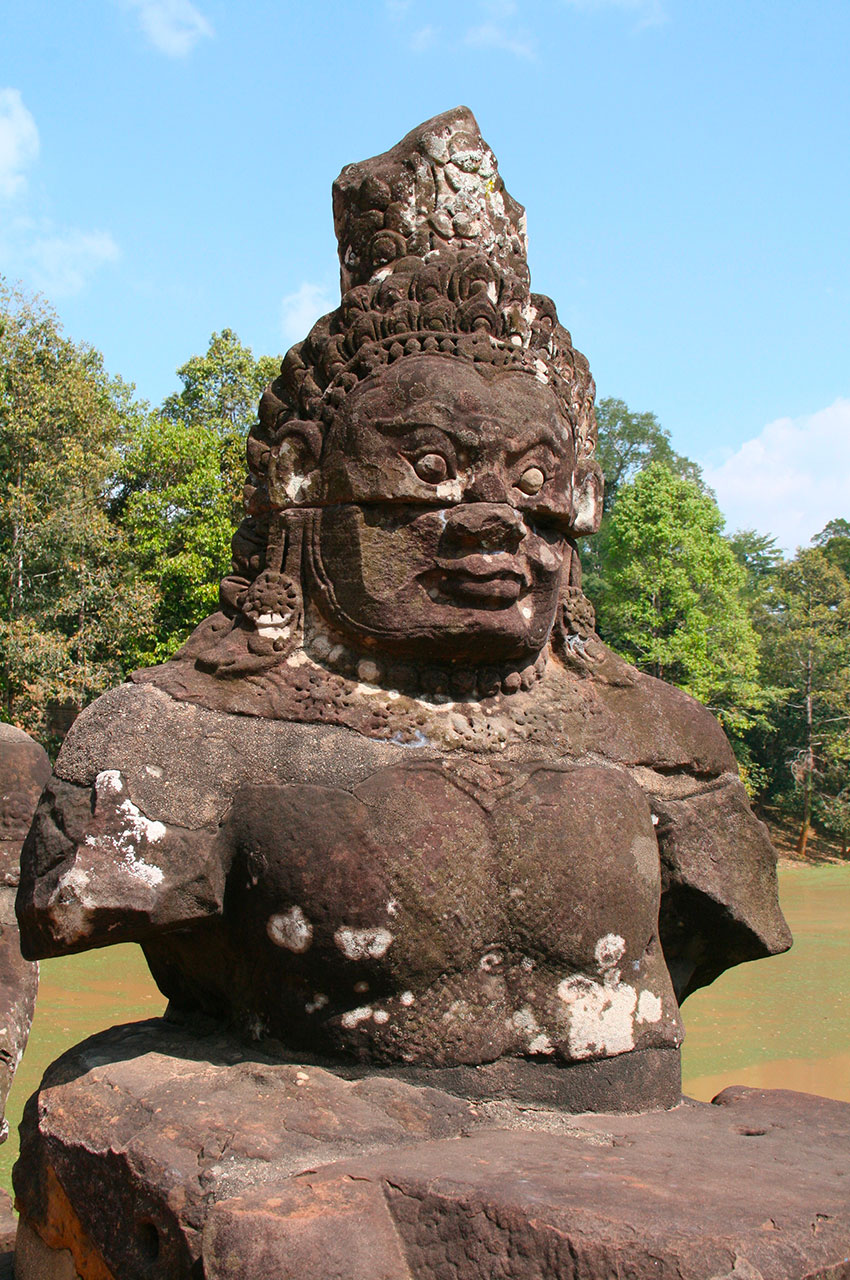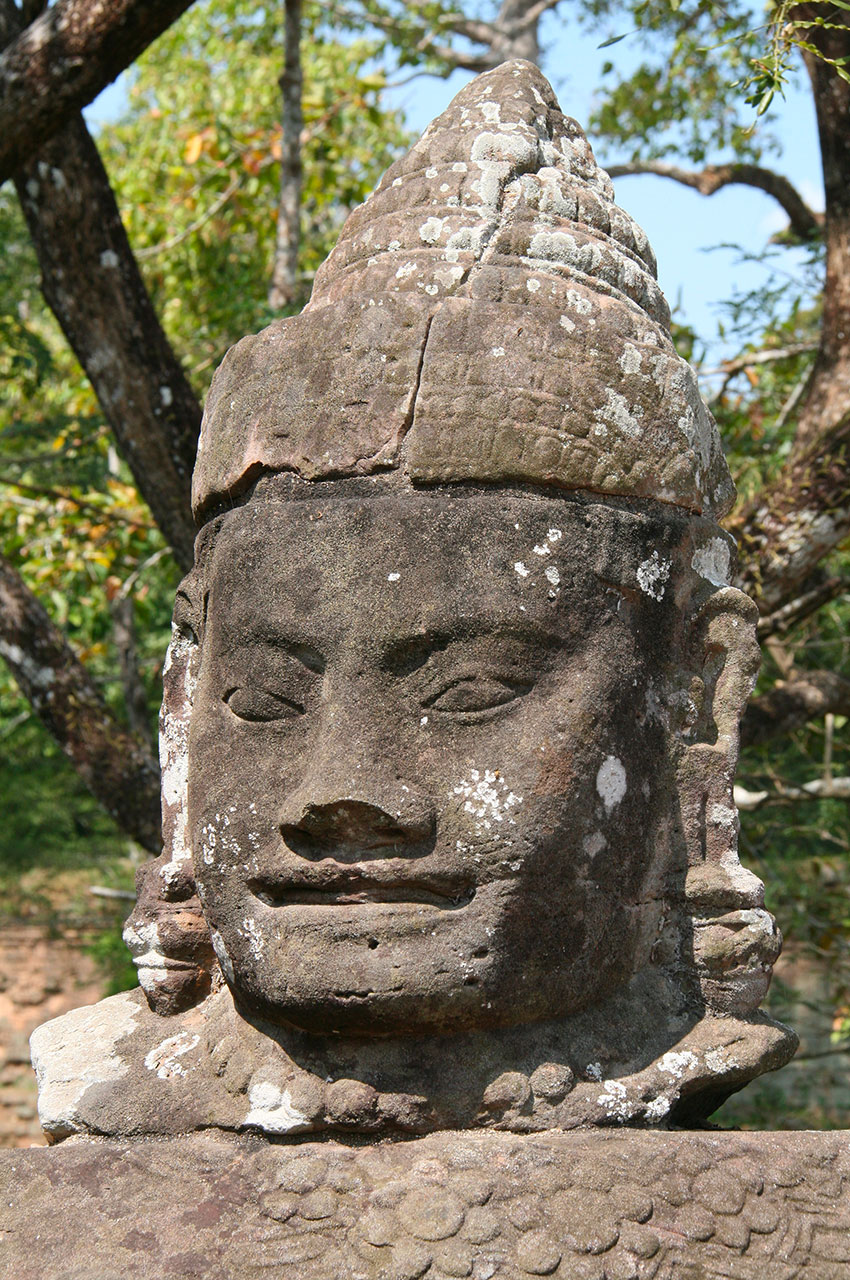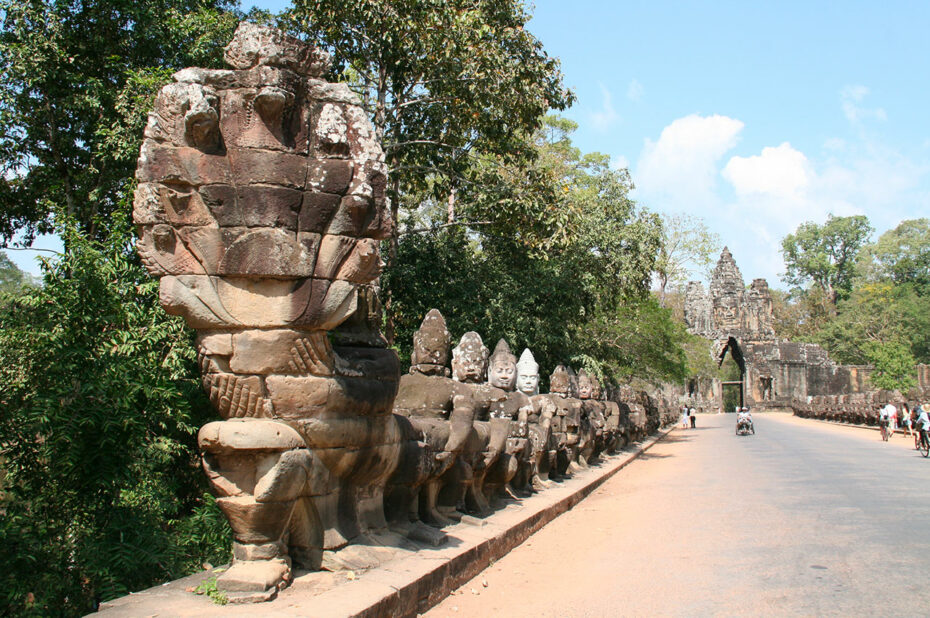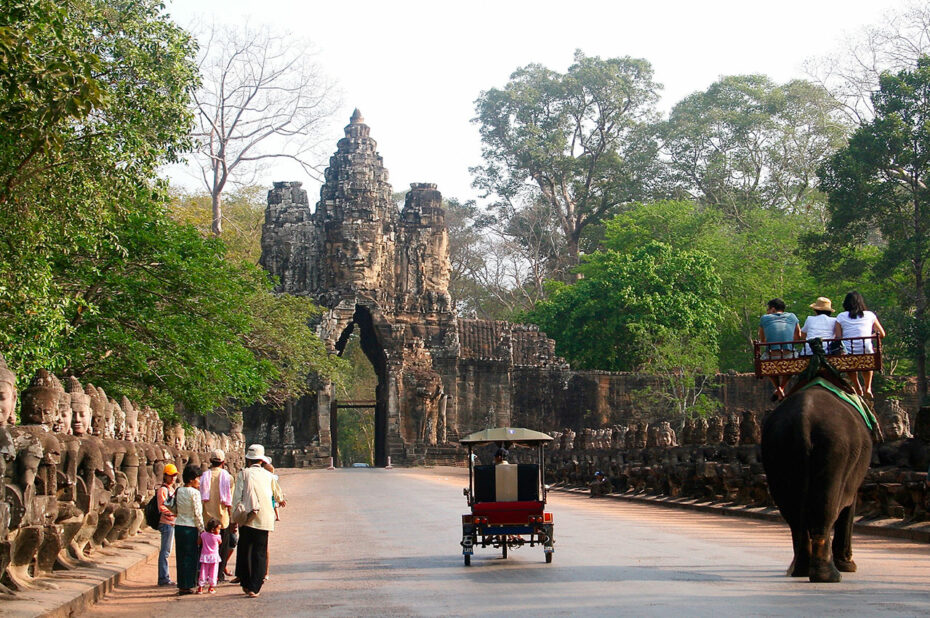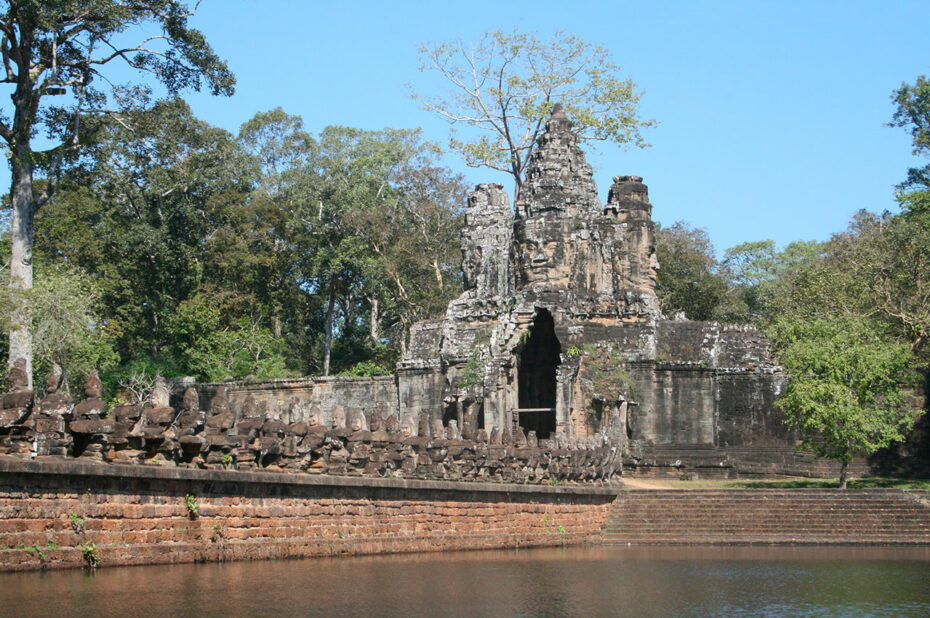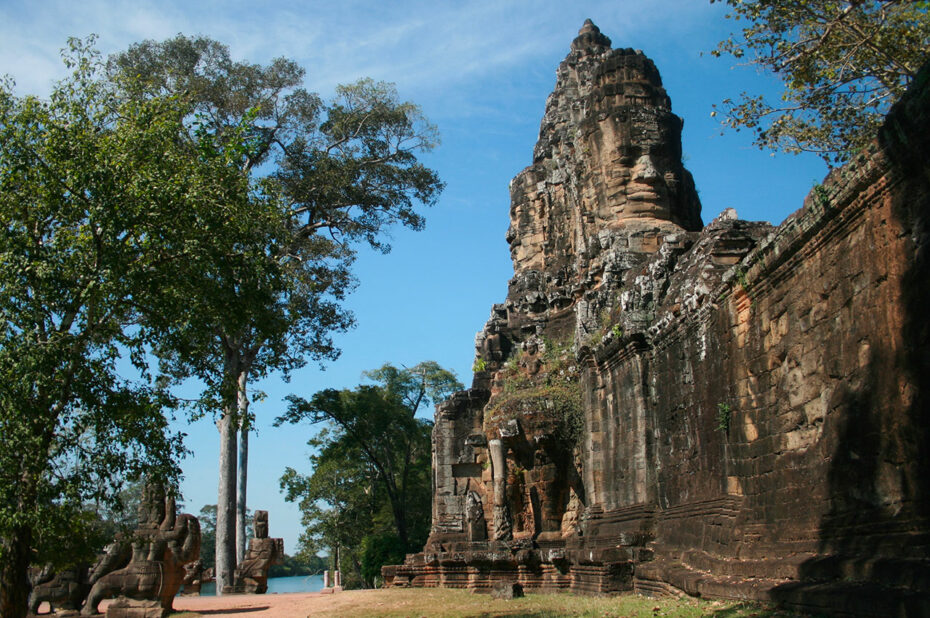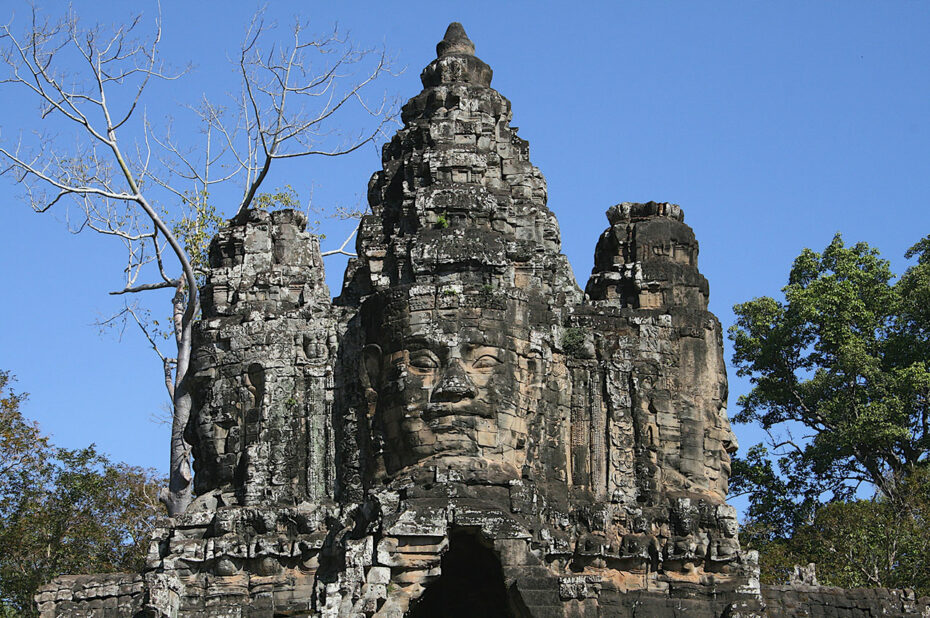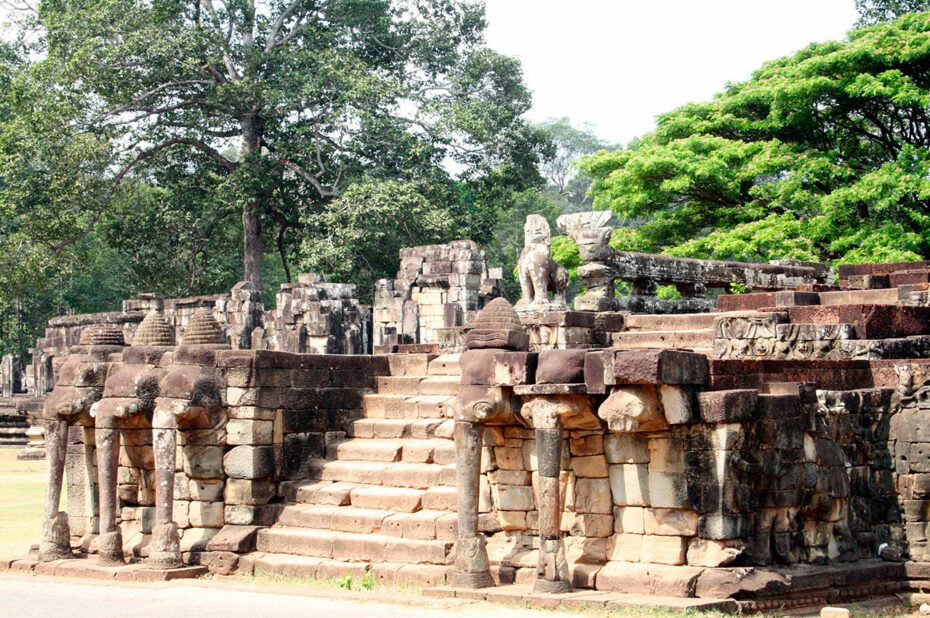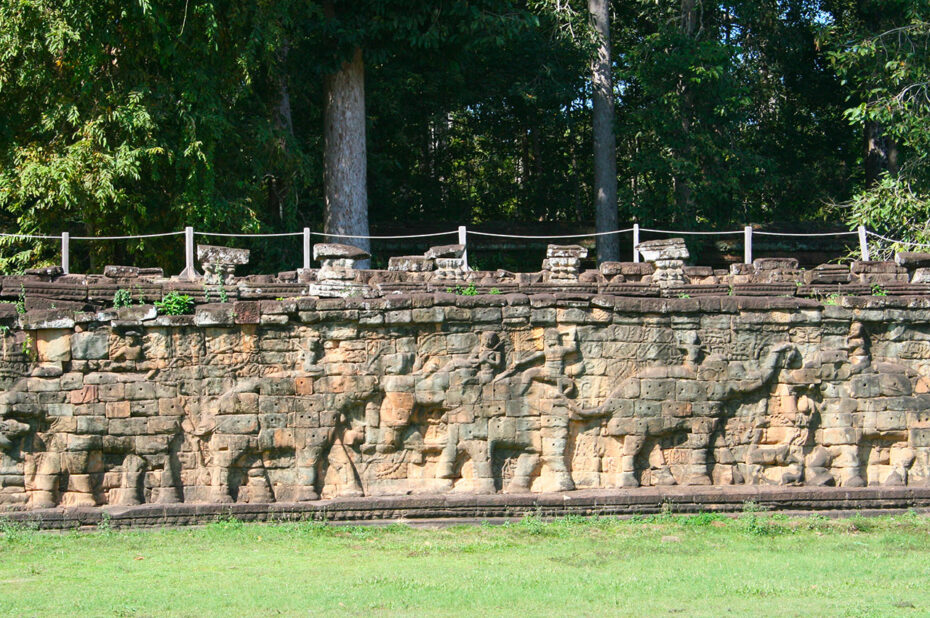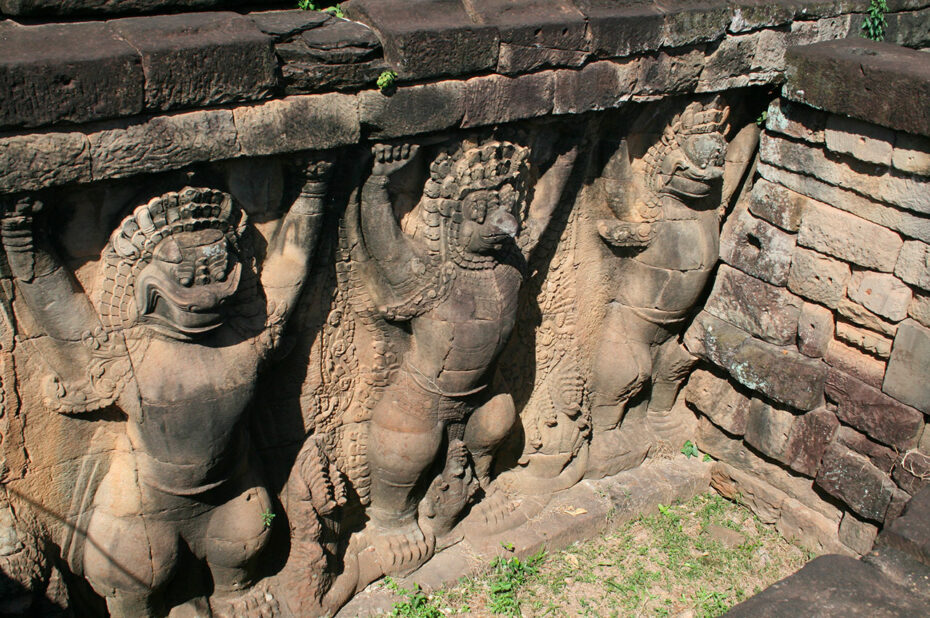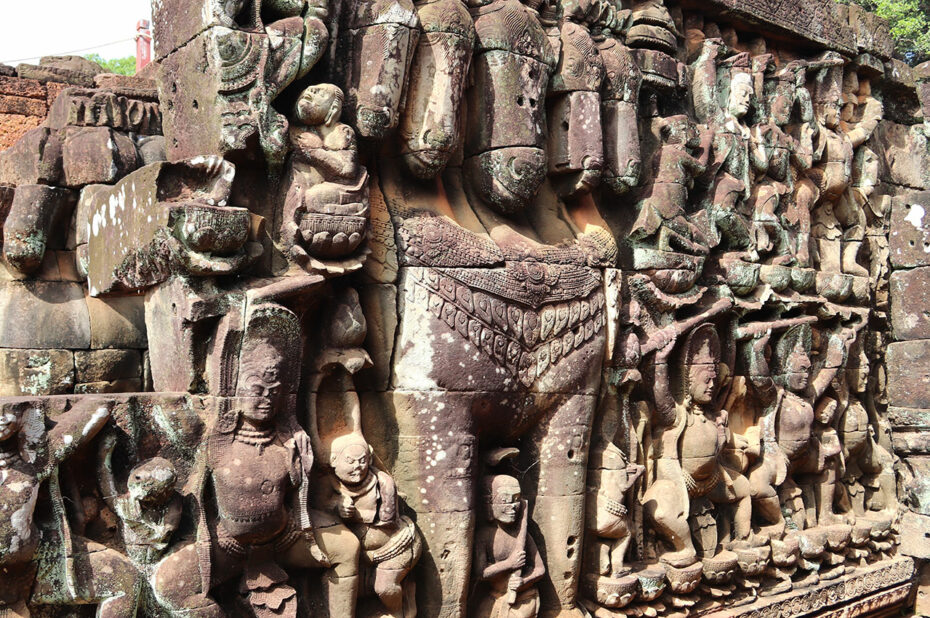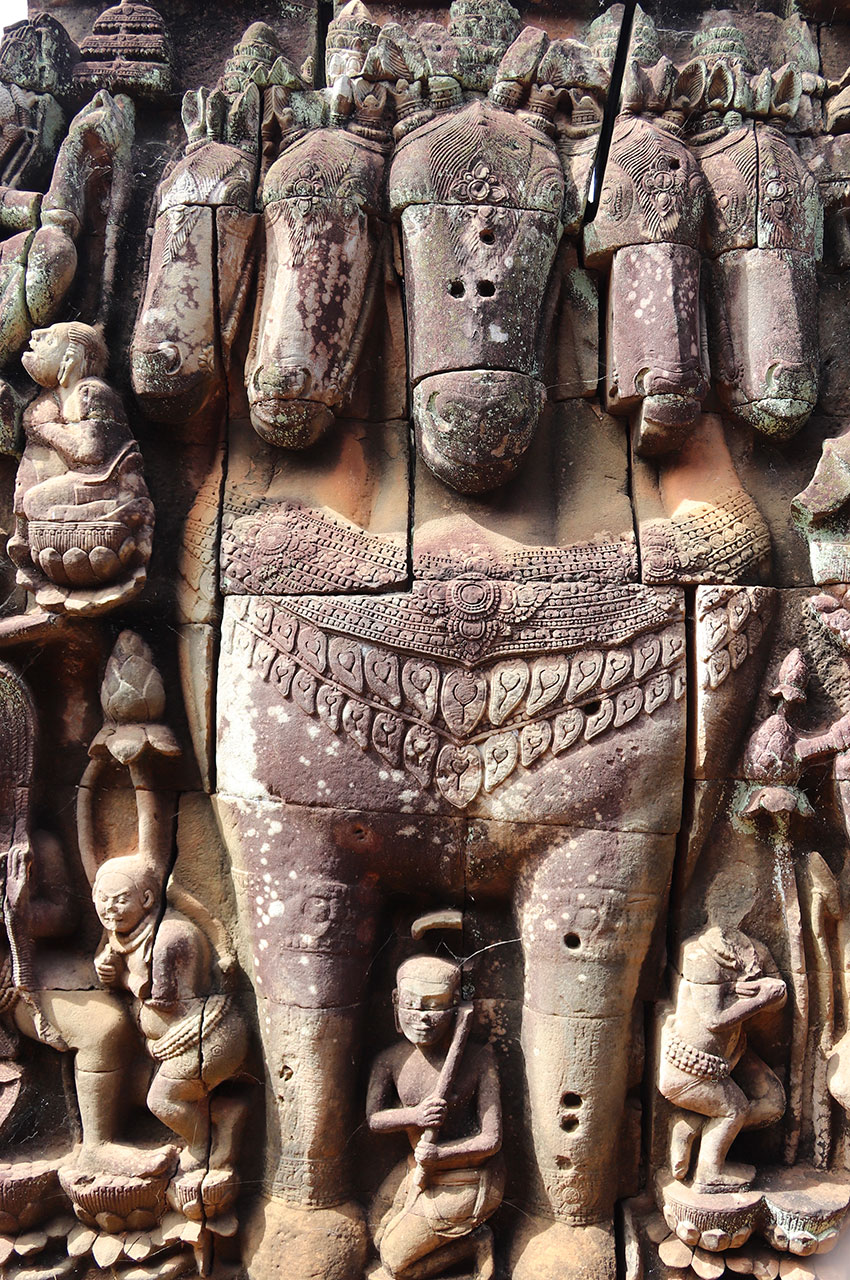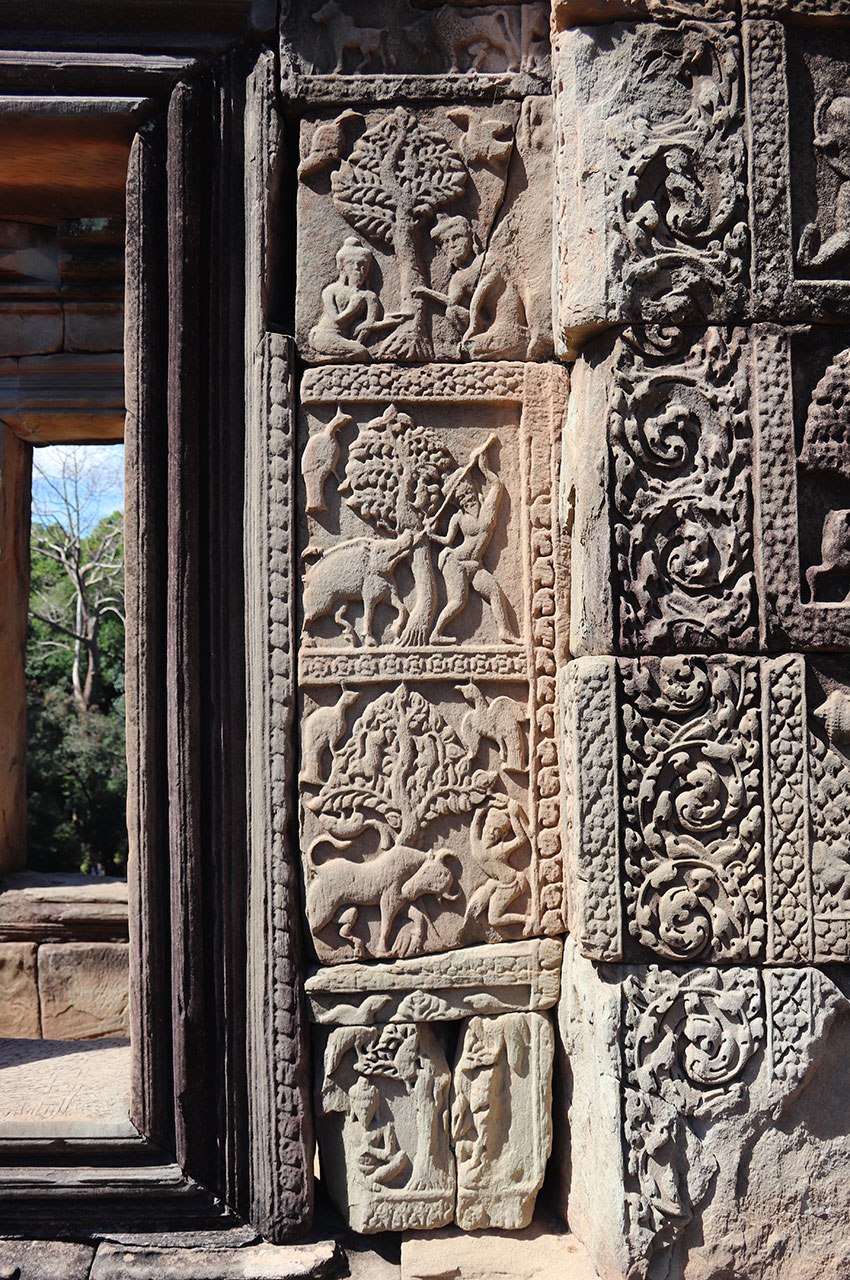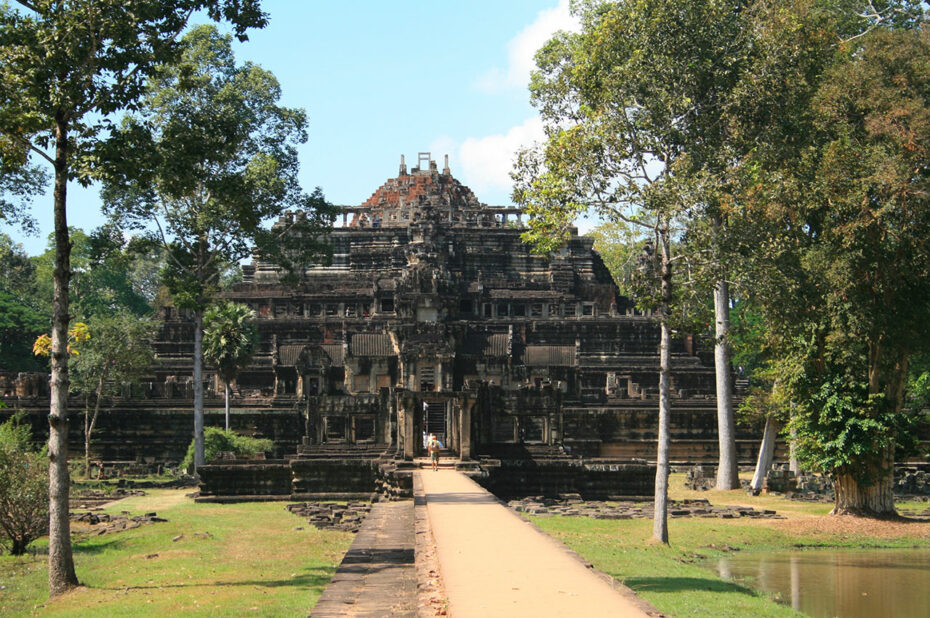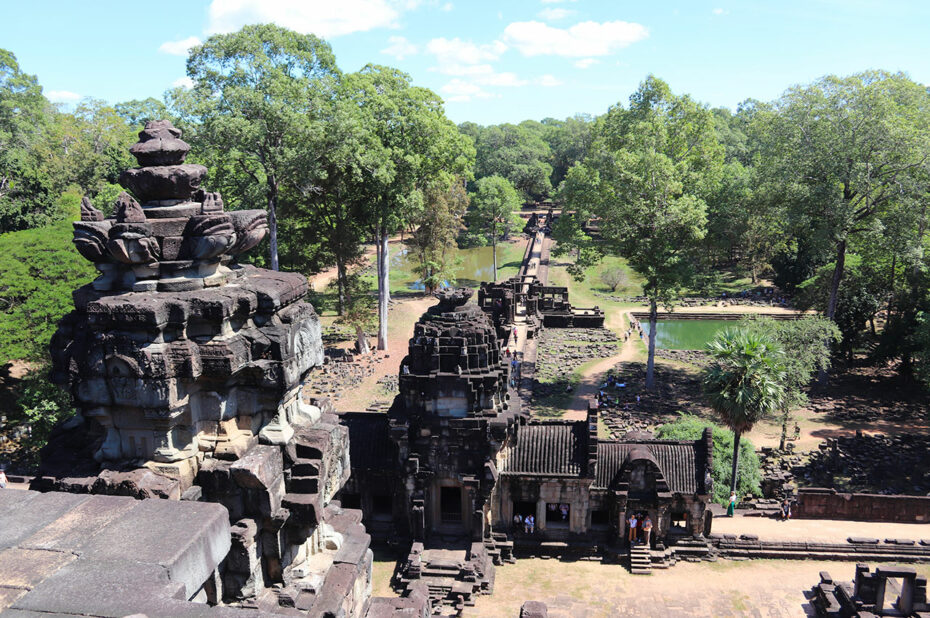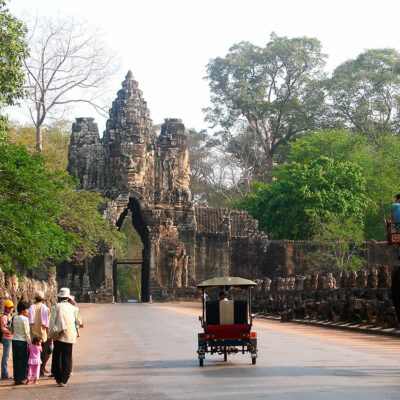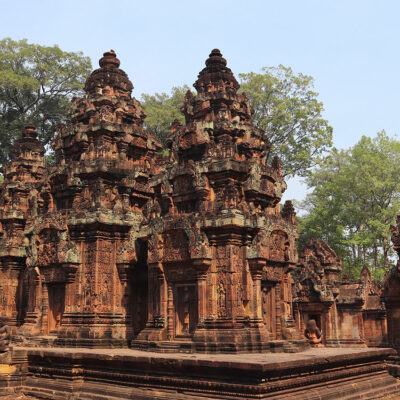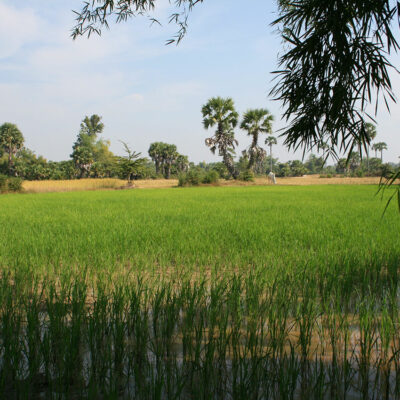
Angkor Thom, or “Great City”, reflects the charm and beauty of Angkorian culture. It forms a vast three-kilometre square, surrounded by an 8-metre-high wall and a 90-metre-wide moat up to six metres deep. Its total surface area is 900 hectares. Home to the king’s court, priests, high officials and bureaucrats, Angkor Thom remained the kingdom’s capital until the early 15th century. The city’s main monuments are the Bayon, the Baphûon, the Royal Enclosure, the Terrace of the Elephants and the Terrace of the Leper King.
The city wall is pierced by five identical monumental gates. You enter the city through the south gate, the best preserved. 23 meters high, it is surmounted by three towers with giant faces facing the four cardinal points, a recurring motif in Jayavarman VII’s constructions. Airavata, the three-headed white elephant, catches lotus flowers with his trunks. He is the mount of Indra (the god, armed with lightning, who causes thunderstorms that generate beneficial rains). Each of Angkor Thom’s gates is preceded by a wide causeway, lined by two rows of giants clutching a polycephalic serpent.
Located in the heart of Angkor Thom, the Terrace of the Elephants dates from the late 12th century and was built by Jayavarman VII. Over 300 metres long, it stretches from the entrance to the Baphûon to the Terrace of the Leper King, forming the north side of the royal square. From this terrace, at the front of the palace, the king and his court could watch the sumptuous parades and festivities that took place in the royal square. The 3-metre-high wall is carved with a long, continuous depiction of elephants and their mahouts in hunting scenes. Five staircases lead up to the terrace. The perrons are framed by motifs already seen on the gates of Angkor Thom: three elephant heads whose trunks form pillars gathering lotuses.
The Baphûon, a temple of Khmer origin dedicated to Shiva, is a pyramid-temple with three terraces lined with galleries, measuring 145 by 150 metres. Also known as the “Golden Mountain”, it is built on an artificial hill within the Angkor Thom enclosure.
See detailed map of Angkor Thom
The city of Angkor Thom has been visited every year from 2008 to 2020.
Click on the picture to enlarge it and discover its caption.
